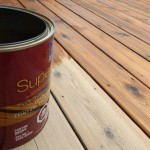What Is The Best Homemade Car Interior Cleaner?
Maintaining a clean car interior contributes significantly to both its aesthetic appeal and overall hygiene. Over time, car interiors accumulate dust, grime, stains, and odors from various sources. While commercially available car cleaning products offer convenience, many contain harsh chemicals that may damage sensitive surfaces or pose health risks. Homemade car interior cleaners provide a cost-effective and environmentally friendly alternative, allowing users to control the ingredients and tailor solutions to specific cleaning needs.
The effectiveness of a homemade car interior cleaner hinges on several factors, including the type of soiling, the surface being cleaned, and the specific ingredients used. A universal "best" cleaner is elusive, as different cleaning tasks require different formulations. However, a range of readily available ingredients, such as vinegar, baking soda, dish soap, and essential oils, can be combined to create powerful and safe cleaning solutions for various car interior surfaces.
Understanding Common Car Interior Soils
Before formulating a homemade cleaning solution, it is crucial to identify the types of soiling present in the car interior. Common culprits include:
*Dust and Debris:
Accumulates on dashboards, consoles, and upholstery, contributing to a dull and unclean appearance. *Food and Drink Stains:
Coffee spills, crumbs, and sticky residues are frequent occurrences, especially in vehicles used by families. *Grease and Oil:
Resulting from accidental spills or handling greasy items, these can be particularly stubborn to remove. *Pet Hair:
Clings to upholstery and carpets, requiring specific techniques for effective removal. *Body Oils and Sweat:
Accumulate on seats, steering wheels, and armrests, creating a breeding ground for bacteria and odors. *Mold and Mildew:
Can develop in damp environments, such as after spills or in areas with poor ventilation.Identifying the specific type of soiling allows for selecting appropriate cleaning agents that target the specific contaminants.
Key Ingredients for Homemade Car Interior Cleaners
Several readily available household ingredients can be effectively used in homemade car interior cleaners. Understanding the properties of each ingredient is crucial for creating safe and effective solutions.
*Vinegar:
Acetic acid, the active ingredient in vinegar, acts as a natural disinfectant and degreaser. It is effective at removing stains, dissolving mineral deposits, and neutralizing odors. White vinegar is typically preferred due to its clear color and lower staining potential. *Baking Soda:
A mild abrasive and deodorizer, baking soda is particularly effective at absorbing odors and removing light stains. It is also useful for scrubbing textured surfaces without causing damage. *Dish Soap:
A gentle surfactant that helps to lift dirt and grease from surfaces. Choose a mild, pH-neutral dish soap to avoid damaging delicate car interior materials. *Water:
Serves as a solvent, diluting the other ingredients and allowing them to spread evenly across the surface being cleaned. Distilled water is recommended to avoid mineral deposits. *Essential Oils:
Offer both cleaning and fragrance benefits. Tea tree oil and eucalyptus oil have antibacterial and antifungal properties, while lemon oil adds a fresh scent and can help to dissolve grease. *Castile Soap:
A gentle and versatile soap made from vegetable oils. It is effective at cleaning a variety of surfaces and is generally considered safe for use on car interiors. *Rubbing Alcohol (Isopropyl Alcohol):
A powerful solvent and disinfectant. It's particularly effective for removing stubborn stains and sanitizing surfaces. Use with caution on sensitive materials as it can potentially cause discoloration or damage. *Hydrogen Peroxide:
A mild bleaching agent and disinfectant. It can be used to remove stains and kill bacteria, but should be used with caution on dark-colored surfaces as it may cause fading.When combining these ingredients, it is important to follow recommended ratios and safety precautions. Always test the cleaner on an inconspicuous area before applying it to the entire surface to ensure it does not cause discoloration or damage.
Effective Homemade Car Interior Cleaning Recipes
Based on the principles outlined above, several effective homemade car interior cleaning recipes can be formulated. Each recipe is tailored to address specific cleaning needs and target different types of soiling.
*All-Purpose Interior Cleaner:
A versatile solution for cleaning dashboards, consoles, and door panels. Mix equal parts white vinegar and water in a spray bottle. Add a few drops of dish soap and a few drops of your favorite essential oil for fragrance. Spray the solution onto a clean microfiber cloth and wipe down the surfaces. *Upholstery Cleaner:
Designed to remove stains and odors from fabric seats and carpets. Mix 1 cup of warm water, ½ cup of white vinegar, and ½ tablespoon of dish soap in a spray bottle. Spray the solution onto the affected area and let it sit for a few minutes. Blot the stain with a clean cloth, working from the outside in. For stubborn stains, sprinkle baking soda onto the area after blotting and let it sit for several hours before vacuuming. *Leather Cleaner:
Formulated to gently clean and condition leather seats and trim. Mix 1 part white vinegar with 2 parts olive oil in a spray bottle. Spray the solution onto a clean microfiber cloth and gently wipe down the leather surface. The vinegar will clean the leather, while the olive oil will help to condition and moisturize it. *Window Cleaner:
An effective and streak-free solution for cleaning car windows and mirrors. Mix equal parts white vinegar and water in a spray bottle. Spray the solution onto the glass surface and wipe it clean with a microfiber cloth or paper towel. *Odor Eliminator:
Baking soda is an effective odor absorber. Sprinkle baking soda onto carpets and upholstery and let it sit for several hours or overnight before vacuuming. For persistent odors, place a small bowl of baking soda in the car overnight. *Grease and Oil Remover:
A combination of baking soda and dish soap can effectively remove grease and oil stains. Make a paste of baking soda and dish soap and apply it to the affected area. Let it sit for a few minutes and then scrub gently with a soft brush. Rinse with water and dry with a clean cloth. *Mold and Mildew Remover:
A diluted solution of white vinegar can help to kill mold and mildew. Mix equal parts white vinegar and water in a spray bottle. Spray the solution onto the affected area and let it sit for a few minutes. Scrub gently with a brush and rinse with water. Be sure to dry the area thoroughly to prevent regrowth.These are just a few examples of the many homemade car interior cleaning recipes that can be formulated using readily available ingredients. Experimentation and adjustments may be necessary to find the perfect solution for specific cleaning needs. It is crucial to prioritize safety and perform spot tests before applying any cleaner to the entire surface.
Practical Tips for Effective Car Interior Cleaning
Beyond the choice of cleaning solution, effective car interior cleaning involves a systematic approach and adherence to certain best practices.
*Vacuum Thoroughly:
Before applying any cleaning solution, vacuum the entire car interior to remove loose dirt, debris, and pet hair. Pay particular attention to carpets, upholstery, and crevices. *Work in Sections:
Divide the car interior into manageable sections and clean one section at a time. This prevents the cleaning solution from drying out before it can be effectively wiped away. *Use Microfiber Cloths:
Microfiber cloths are excellent for cleaning car interiors because they are soft, absorbent, and non-abrasive. They also trap dirt and dust effectively, preventing it from being spread around. *Blot, Don't Rub:
When cleaning stains, blot the area with a clean cloth instead of rubbing. Rubbing can spread the stain and damage the surface. *Dry Surfaces Thoroughly:
After cleaning, dry all surfaces thoroughly with a clean, dry cloth. This will help to prevent water spots and mildew growth. *Ventilate the Car:
Open the car doors and windows to allow fresh air to circulate and help the interior dry more quickly. This is particularly important after cleaning carpets and upholstery. *Protect Surfaces:
After cleaning leather or vinyl surfaces, consider applying a protectant to help prevent future damage. *Regular Maintenance:
Regular cleaning prevents the buildup of dirt and grime, making it easier to maintain a clean car interior. Aim to vacuum and wipe down surfaces at least once a month.By following these practical tips, users can maximize the effectiveness of their homemade car interior cleaners and maintain a clean and comfortable driving environment.

Best Homemade Car Interior Cleaner Arnold Auto Repair

Homemade Car Interior Cleaner Recipes 12 Tips For Cleaning

Best Homemade Car Interior Cleaner Diy Tips For A Spotless Ride Everyday Skate

Homemade Car Dashboard Cleaner

Diy Car Cleaning S With 20 Household Items Kelley Blue Book

Homemade Car Interior Cleaner

Diy Car Interior Cleaning Budget For Light To Heavy Stains

Homemade Car Interior Cleaner

How To Super Clean Your Interior Dashboard Center Console Door Panels Glass
:max_bytes(150000):strip_icc()/how-to-clean-car-interior-4775265-10-3ae26ac90ed1419dab07ea0b9ec06e8a.jpg?strip=all)
How To Clean A Car Interior
Related Posts








